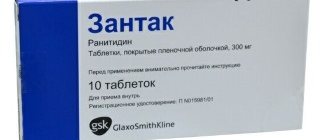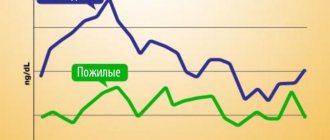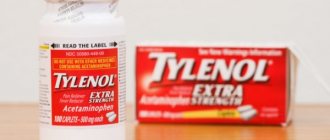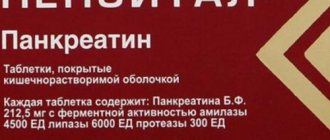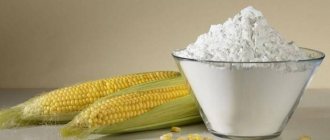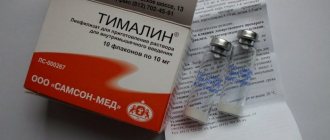Write a review
Reviews: 0
Manufacturers: Asta Medica
Active ingredients
- Thioctic acid
Disease class
- Not indicated. See instructions
Clinical and pharmacological group
- Not indicated. See instructions
Pharmacological action
- Hypolipidemic
- Metabolic
Pharmacological group
- Vitamins and vitamin-like products
- Other lipid-lowering drugs
What instructions does this drug have?
Each package contains instructions that contain complete information about this product. In it you can find information about how to take this drug, what to do if you suddenly encounter an overdose, in which cases it is justified to take it and in which such treatment should be abandoned, how to store it and what composition it has. All this data allows you to fully understand what kind of drug is in front of you. However, if this information is not enough for you, then in the article, in addition to instructions for use, you can also find the price range, as well as analogues with which it seems possible to replace this drug.
Pharmacology
The main component of the drug Thioctacid is tictic (alpha-lipoic) acid. The medicine increases endoneurial blood flow and also stabilizes nitric oxide levels. The latter has a vasodilating effect, while regulating blood pressure and circulation. If the synthesis of nitric oxide is free, then it acts as a free radical.
Thioctacid improves endothelial function. Endothelial cells normalize blood pressure, participate in the formation of new blood vessels, and also control the action of blood clotting substances. It also lowers total blood cholesterol levels.
This drug helps enhance the action of insulin, while helping to utilize glucose in diabetes. It is one of the key participants in the glycolytic breakdown of carbohydrates.
When can the drug be taken?
This drug is prescribed to patients for the complex treatment of alcoholic or diabetic polyneuropathy.
In addition, this drug is often also prescribed to people who have any heart disease.
How exactly is the medication taken?
The tablet form of the drug Thioctacid BV should be taken orally in its entirety with plenty of liquid, such as water. Under no circumstances should they be chewed or crushed. In addition, it must also be taken into account that food can reduce the effect of the active substance. That is why the tablets must be taken either a few hours after meals or in the morning immediately after the patient wakes up.
Treatment with tablets lasts from three weeks to six months; here it is important to rely on the smooth reduction of symptoms. If necessary, you can repeat the course of treatment. You can repeat it a few weeks after the first one.
Treatment of heart diseases with the drug is carried out until the patient’s condition returns to normal. If his condition worsens, then repeat the course a month after the first.
In more severe cases, they resort to the drug Thioctacid 600. The drug is presented in the form of a liquid in ampoules. It is important to remember that the medicine must be administered slowly.
Over three weeks, the patient receives 15 injections. After this, he is transferred to Thioctacid BV tablets, which must be taken for up to two months. To prevent diseases, Thioctacid 100 is prescribed, which should be taken up to three times a day.
Attention! The required dosage is selected by the doctor individually.
Composition of the medicine
Today this drug is available in the form of a solution or tablets.
The main substance of the drug is thioctic acid (alpha-lipoic acid).
The auxiliary elements for injection are water and trometamol. BV tablets contain a minimal set of excipients. They do not contain castor oil, lactose, silicon, or starch, which is usually typical for cheap medicines.
Combination with other drugs
It is important to consider that Thioctacid may reduce the effectiveness of Cisplastin, so the simultaneous use of these drugs is not allowed, or, if allowed, the dosage of the latter drug is increased.
The drug cannot be combined with drugs that contain calcium, iron, aluminum, magnesium, etc. the medicine reacts with metals. They can be taken 6 hours after taking Thioctacid. The best option would be to take the main drug in the morning, and the remaining drugs in the evening.
Thioctacid significantly enhances the effectiveness of insulin, as well as drugs that lower blood sugar. That is why it may be necessary to reduce the dosage of the latter drugs.
This drug is completely incompatible with sugar solutions, such as Ringer's, glucose or fructose.
Solution for intravenous administration Thioctacid 600 T (Thioctacid 600 T)
Instructions for medical use of the drug
Description of pharmacological action
Thioctic (α-lipoic) acid participates in mitochondrial metabolism in the cell and functions as a coenzyme in the complex for the transformation of substances that have a pronounced antitoxic effect. They protect the cell from free radicals that arise during intermediate metabolism or during the breakdown of exogenous foreign substances and from heavy metals. The synergistic effect of α-lipoic acid in relation to insulin is known to increase glucose utilization. In patients with diabetes mellitus, thioctic acid leads to a change in the concentration of pyruvic acid in the blood.
Indications for use
Treatment of symptoms of peripheral (sensory-motor) diabetic polyneuropathy.
Release form
doses for intravenous administration 600 mg / 24 ml; dark glass ampoule 24 ml, cardboard pack 5; Warehouse 1 tablet, coated (Tioctacid 600), containing thioctic (alpha-lipoic) acid 600 mg; Dark glass bottles contain 30 pcs., 1 bottle in a box. 1 ml solution for injections (Tioctacid 600 T) containing thioctic acid (in the form of trometamol salt) 25 mg; in ampoules of 24 ml, in a cardboard pack 5 ampoules.
Pharmacodynamics
A drug that regulates speech metabolism. Thioctic (α-lipoic) acid plays a role in the mitochondrial metabolism of cells. It represents the function of coenzyme in the metabolism of enzymes, which produces a pronounced antitoxic effect and protects cells from strong radicals, which arise during the intermediate metabolism of substances or during the breakdown of exogenous substances. foreign substances, and salts of important metals. Thioctic (α-lipoic) acid exhibits synergism with insulin, which results in increased utilization of glucose. In patients with blood diabetes, stop the drug until the concentration of pyruvic acid in the blood changes.
Use during pregnancy
It is possible that the overall effect of therapy outweighs the potential risk to the fetus. For an hour of rejoicing, follow the instructions for breastfeeding.
Contraindications for use
Hypersensitivity to thioctic (alpha-lipoic) acid or other components of the drug.
Side effects
Tablets: in some cases - a decrease in the level of glucose in the blood (through increased glucose utilization), allergic reactions (visip, kropivyanka, itching). Reasons for injections: shifting the intracranial pressure and blocking the breath (with fluid in/injection, go away on its own), in some cases - seizures, double vision, pinpoint hemorrhage, increased bleeding, decreased r Level of glucose in the blood, allergic reactions - soaring , kropiv'yanka, sverbizh, systemic reaction right up to anaphylactic shock.
Directions for use and doses
All in all, without eating and drinking plenty of water, 600 mg 1 time per dose. IV dosage per ear for severe sensitivity disorders in severe diabetic polyneuropathy - 1 ampoule of Thioctacid 600T (equivalent to 600 mg of thioctic acid) for 2-4 days . The intravenous administration should be carried out liberally (not more than 50 mg/min, then 2 ml/min). It is possible to administer undiluted solution using an additional syringe for injection or perfusor. In this case, the hour of guilt becomes no less than 12 months. Thioctacid 600 T can be used as an infusion of physiological sodium chloride (diluted to 100-250 ml) with a length of 30 minutes. Protect the infusion dispenser in light (for example, in aluminum foil). Expenses for injections and light thefts last for 6 years. In a container for infusion with Thioctacid 600T, seal only isotonic solution with sodium chloride. Note: There are daily clinical data on the use of the drug in children and children, so the drug cannot be prescribed to children and children.
Overdose
Symptoms: when taken in a dose of more than 10 g (especially when combined with alcohol) - in isolated episodes there may be a development of generalized vascular attacks, manifestations of a disorder of the acid-sweeper fluid (lactic acidosis), hypoglycemic coma, manifestations of stopping the throat of blood, which can lead to the development of threatening life of the camps. Treatment: non-gain hospitalization with detoxification is required (vomiting, washing the mucus, taking active vugillium, etc.).
Interactions with other drugs
Reduces the effectiveness of cisplatin, which binds metals (not to be used simultaneously with antidiabetic drugs, magnesium and other metal-containing drugs), and can be combined with the use of cutaneous insulin and other antidiabetic drugs (I recommend There is control of the level of glucose in the blood, in some cases - a change in the dose of antidiabetic agents) .
Precautions for use
It is not recommended to drink alcohol either before the bath or between courses.
Special instructions for use
Due to the light sensitivity of the active substance, remove the ampoule from the packaging directly in front of the victor. Dispensing for injections, removal from light, for a period of 6 years after preparation.
Storage conditions
Protected in a bright place, at a temperature below 30 ° C.
Best before date
48 months
ATX classification:
A Digestive tract and metabolism
A16 Other drugs for the treatment of gastrointestinal diseases and metabolic disorders
A16A Other drugs for the treatment of gastrointestinal diseases and metabolic disorders
A16AX Various other drugs for the treatment of gastrointestinal and metabolic diseases
A16AX01 Thioctic acid
How might an adverse reaction manifest itself?
While taking this medication, patients may begin to develop side effects, for example:
- Abdominal pain, vomiting, nausea, constipation, bloating, increased gas formation, diarrhea;
- Urticaria, skin rash, angioedema. In severe cases, anaphylactic shock may begin to develop;
- Pain in the head, changes in taste at the receptor level, sudden weight loss, weight gain;
- Hypoglycemia, rapid heartbeat, dizziness, tremors, constant feeling of hunger, increased sweating;
- Pain at the injection site. This condition does not require discontinuation of the medication.
If you suddenly begin to notice the appearance of these conditions, it is recommended to stop taking the medication and consult a doctor for help.
What should you do in case of an overdose?
Overdose may be indicated by symptoms such as:
- Impaired consciousness;
- Pain in the head, as well as double vision;
- Vomiting, diarrhea, abdominal pain;
- Convulsions;
- A sharp decrease in blood glucose, up to the development of coma.
If you suddenly take the medicine in a large dosage, you should immediately rinse your stomach and take pills aimed at relieving the existing symptoms.
When should you not take the medicine?
This drug is not recommended for use in the presence of such conditions and pathologies as:
- Allergy to components;
- Lactose intolerance (congenital);
- Malabsorption syndrome.
Special instructions
In this section we will look in detail at taking medication if:
A man is about to get behind the wheel;- The girl is in position;
- The patient is still a child;
- The patient has any abnormalities in the functioning of the kidneys;
- The patient has liver dysfunction;
- Dispensing medication;
- Other states.
Driving
If you are suddenly going to get behind the wheel, then you should take into account that the drug can cause dizziness, nausea, clouding of consciousness, severe abdominal pain, and diarrhea. That is why doctors recommend stopping driving for a while.
Pregnancy
The time when she carries a child under her heart is especially exciting for any girl. At this time, not only the girl, but also her body experiences a special state, because... a lot of pressure falls on him. That is why taking any medications is undesirable. But this is far from the only reason. Medicines, including Thioctacid, may not have the most beneficial effect on the child, for example, conditions such as:
- Frozen pregnancy;
- Development of serious pathologies;
- Premature birth.
It is also not advisable to take this medication while breastfeeding.
Kidney diseases
If a person has kidney diseases that are moderate in nature, then taking the medicine is allowed. However, if they are severe, then taking it is unacceptable.
Liver diseases
If a person has moderate liver disease, then taking medication is allowed, however, the same cannot be said if the person has severe illness.
Release from pharmacy
This medicine is dispensed from the pharmacy only after the patient shows a prescription from the doctor.
Other features
This drug is completely incompatible with drinking alcohol.
If the medication is abruptly discontinued, rebound syndrome may occur. The product may be addictive.
Thioctacid BV
Active substance:
Thioctic acid
Pharmgroup:
Vitamins and vitamin-like products
Average price in pharmacies
| Name | Manufacturer | average price |
| Thioctacid 600t 0.025/ml 24ml n5 amp solution i.v. | MEDA PHARMA | 1543.00 |
| Thioctacid bv 0.6 n100 tablet p/capt/coating | MEDA PHARMA | 3018.00 |
| Thioctacid bv 0.6 n30 tablet p/capt/coating | MEDA PHARMA | 1763.00 |
Analogs for the active substance:Berlition 300 Lipoic acid Lipothioxone Octolipen Thiogamma Thioctacid 600 Thioctacid 600 T Thiolepta Thiolipon Espa-lipon | Application area:Pain syndrome in diabetic neuropathy Pain due to diabetic neuropathy Pain due to diabetic polyneuropathy Diabetic polyneuropathy Diabetic neuropathy Diabetic neuropathic ulcer of the lower extremities Diabetic neuropathy Diabetic polyneuropathy Diabetic polyneuritis Diabetic neuropathy Peripheral diabetic polyneuropathy Diabetic polyneuropathy Sensorimotor diabetic polyneuropathy |
Analogs
The drug has analogues such as: Berlition, Lipamide, Lipothioxone, Thiogamma, Thiolepta, Espa-Lipon, Thiolipon, Lipoic acid, Octolipen, Dialipon Turbo, Nerviplex.
Only a doctor can select an analogue.
- See our article “The best folk remedy for gastritis!” To get rid of it QUICKLY and FOREVER...
- How to get rid of gases in the intestines and why do they occur?
- Activated carbon cleaning - is it worth starting?
